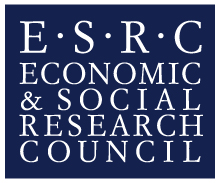
Numer8ED
Cross-format number integration and its relationship to mathematics
Why do some children struggle with maths, and how can we identify these children in early primary school? A better understanding of early risk factors for mathematical difficulties is crucial for the development of theoretically motivated, effective interventions.
Overview
This research project investigated the development of a fundamental principle of numeracy, the link between number words - for example "three-hundred-and-twenty-eight" - and number symbols - "328" - with the aim to identify potential risk factors for low numeracy. Children entering primary school need to quickly shift from using mainly spoken numbers words, for example "twenty-three", to being able to write down multi-digit Arabic strings; in this case "23", accurately upon hearing spoken number words. This is called number word transcoding.
The Numer8ED project tested the hypothesis that the speed and accuracy with which children can transcode is an important early indicator of their later mathematical development.
The project had two parts - a longitudinal strand and a cross-sectional strand.
Longitudinal strand
Over a three year period (2017-2019) we visited over 300 children in 11 schools in Yorkshire to investigate how their transcoding knowledge and arithmetical ability developed during this period.
Cross-sectional strand
We also investigatied the neural correlates of cross-modal numerical processing across different age groups using a technique called electroencephalography (EEG), which records the naturally occurring electrical signals produced by the brain.
During the testing session we asked participants to pay close attention to some numbers and pictures whilst wearing an EEG cap so that we could record EEG data. The EEG cap is similar to a swimming cap and consists of a number of small electrodes that rest on the head and record electrical activity along the scalp
Collaborators
Given the multilingual context of many children in primary school in the UK, and across Europe, it is important to find out much more about whether language factors influence the association between spoken number words and Arabic digits, and if so, how? We investigated the influence of language on number transcoding by comparing monolingual children from two language backgrounds: English and German.
This research project has been carried out in collaboration with Professor Karin Landerl and her team at the University of Graz, Austria, who tested German-speaking children in Austria.

Numeracy is at least as important as literacy for life success, yet much less is known about risk factors for low numeracy."
- Dr Silke Göbel, Principal investigator.
